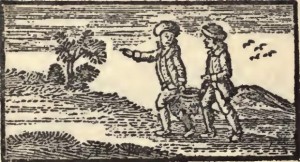The Dark Origins of Classic Nursery Rhymes
You probably noticed as a child that the Nursery Rhymes we all grew up with seemed to have an air of the macabre about them. This concise read on the dark origins of nursery rhymes will solidify this hunch for you…
The Dark Origins of 11 Classic Nursery Rhymes
by Jennifer M Wood
“In the canon of great horror writing, Stephen King, Edgar Allan Poe, H.P. Lovecraft, Bram Stoker, and Mary Shelley tend to dominate the craft. But Mother Goose isn’t too far behind. Yes, that fictional grande dame of kiddie poems has got a bit of a dark streak, as evidenced by the unexpectedly sinister theories surrounding the origins of these 11 well-known nursery rhymes.
1. BAA, BAA, BLACK SHEEP (1731)
Though most scholars agree that “Baa, Baa, Black Sheep” is about the Great Custom, a tax on wool that was introduced in 1275, its use of the color black and the word “master” led some to wonder whether there was a racial message at its center. Its political correctness was called into question yet again in the latter part of the 20th century, with some schools banning it from being repeated in classrooms, and others simply switching out the word “black” for something deemed less offensive. In 2011, news.com.au reported on the proliferation of “Baa, Baa Rainbow Sheep” as an alternative.
2. GOOSEY GOOSEY GANDER (1784)
It’s hard to imagine that any rhyme with the phrase “goosey goosey” in its title could be described as anything but feelgood. But it’s actually a tale of religious persecution, during the days when Catholic priests would hide themselves in order to say their Latin-based prayers, a major no-no at the time—not even in the privacy of one’s own home. In the original version, the narrator comes upon an old man “who wouldn’t say his prayers. So I took him by his left leg. And threw him down the stairs.” Ouch!…
Click here for more.
Share

